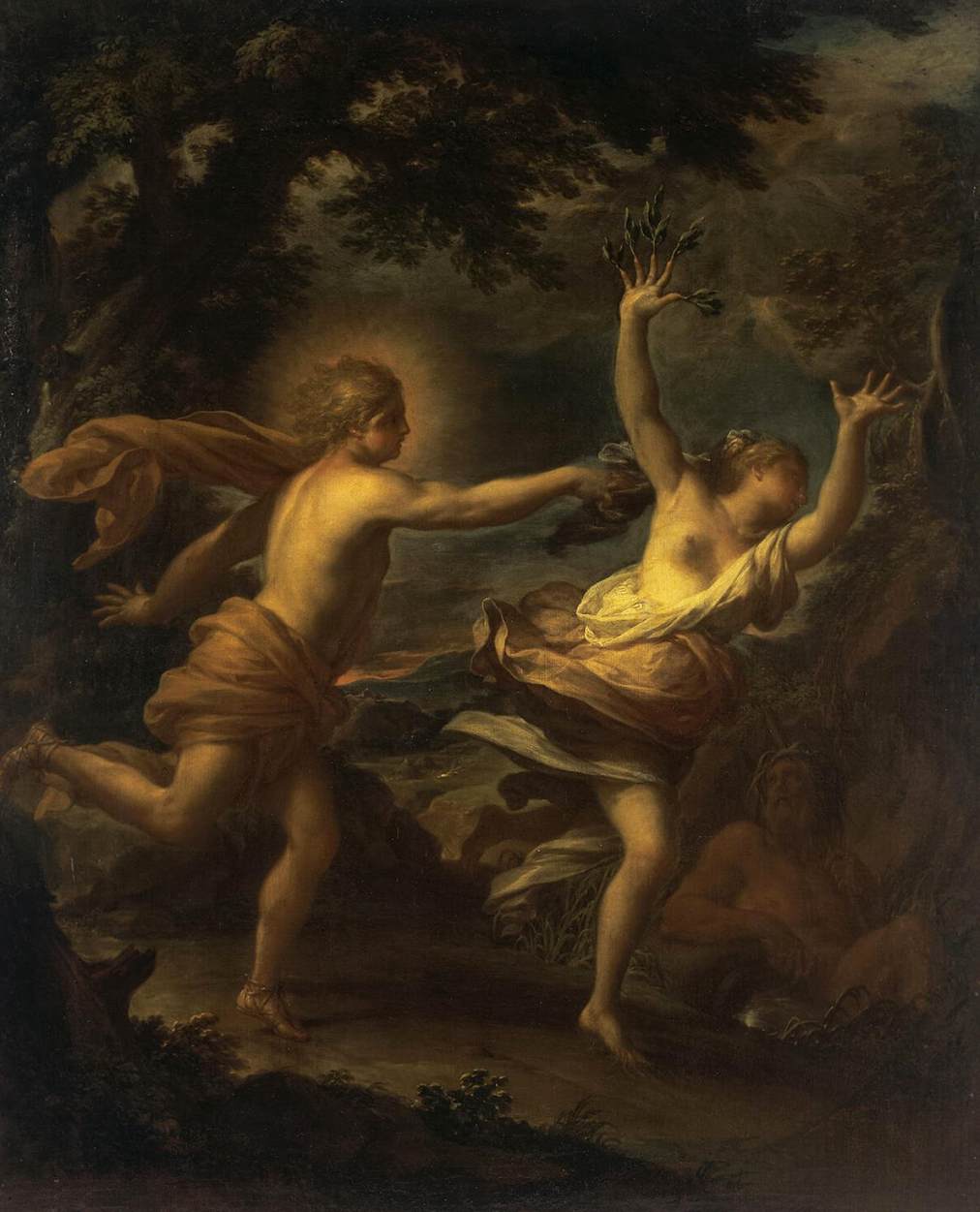Description
Apollo and Daphne is a painting by the Italian artist Francesco Trevisani, known for his Baroque style and his ability to capture emotion and drama in his works. This painting, original size 73 x 60 cm, represents a pivotal moment in Greek mythology.
The composition of the painting is remarkably dynamic and dramatic. Trevisani manages to convey the sensation of movement and action through the posture of the characters and the arrangement of the figures on the canvas. Apollo, the sun god, pursues Daphne, a nymph, who transforms into a tree to escape his harassment. This transformation is masterfully depicted in the painting, with Daphne in the process of turning into a laurel tree, her limbs elongating and her body merging with the tree's bark.
The use of color in the painting is vibrant and dramatic. Trevisani uses bright, warm tones to represent the sun and fire that surrounds Apollo, while Daphne is wrapped in softer, cooler tones that represent nature and tranquility. This choice of colors reinforces the dichotomy between the two characters and their opposite destinies.
The story behind the painting is fascinating and comes from Greek mythology. According to legend, Apollo falls in love with Daphne and pursues her relentlessly. Daphne, desperate to escape his harassment, calls for help from her father, the river god, who transforms her into a laurel tree. Apollo arrives too late and can only hug the tree as a symbol of his lost love.
A little-known aspect of this painting is that it was created as part of a series of works on Greek mythology that Trevisani produced for an Italian nobleman. These paintings, including Apollo and Daphne, were highly acclaimed in their day and are considered some of the artist's greatest works.
In short, Francesco Trevisani's Apollo and Daphne is a painting that stands out for its baroque style, its dynamic composition, its vibrant use of color, and its depiction of a fascinating mythological story. This work of art continues to be appreciated for its ability to capture emotion and drama, and is considered one of Trevisani's greatest creations.

